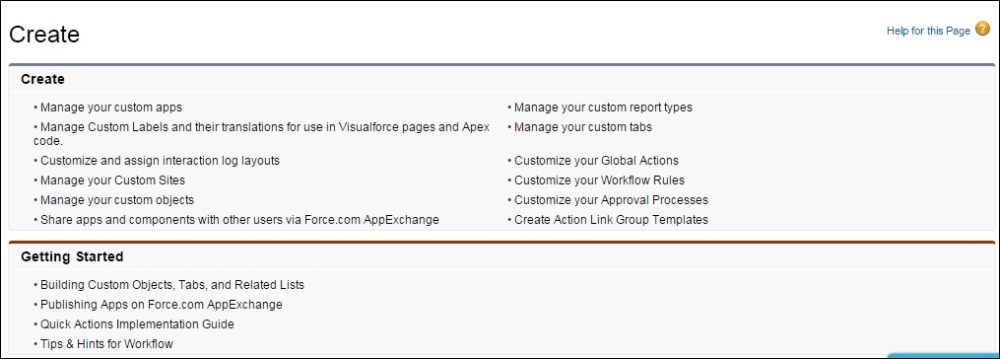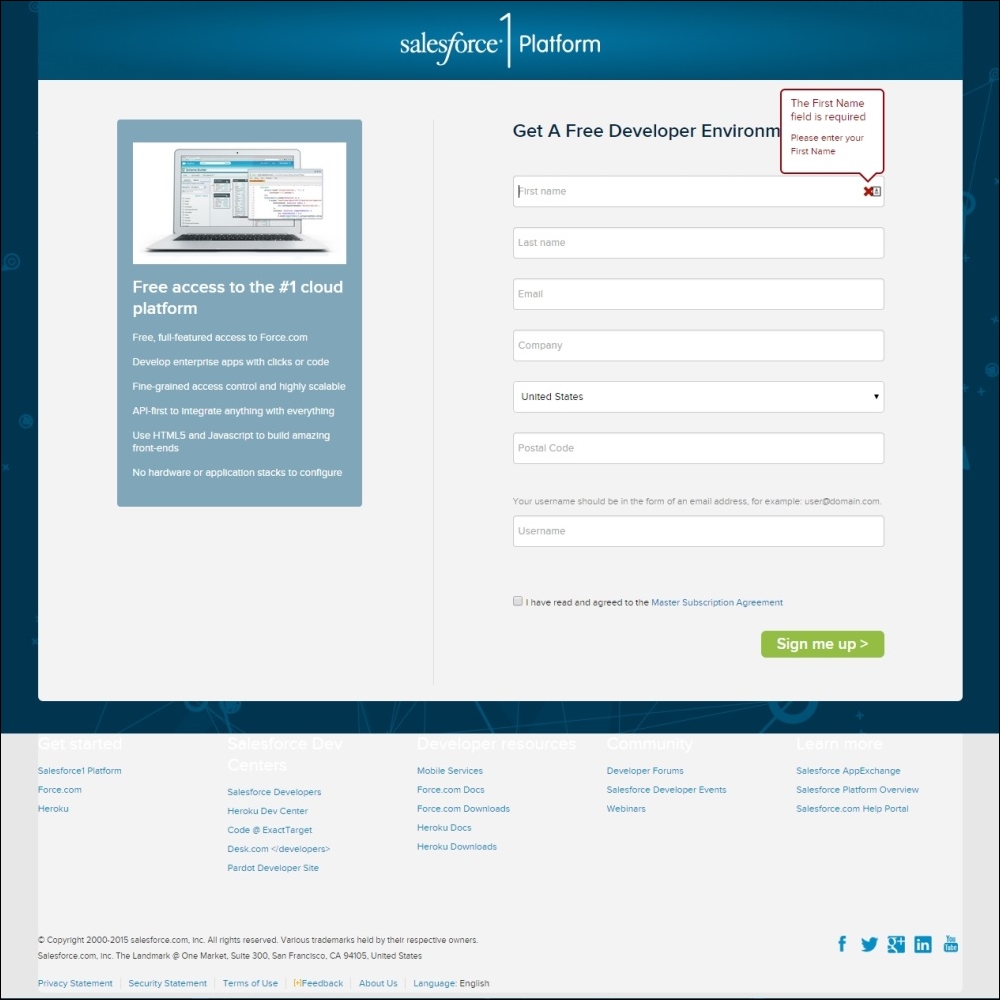There are some common types of applications that are required to automate an enterprise process. They are as follows:
- Content-centric applications: These applications enable organizations to share and version content across different levels. They consist of file sharing systems, versioning systems, and content management systems.
- Transaction-centric applications: These applications focus on transactions. They are banking systems, online payment systems, and so on.
- Process-centric applications: These applications focus on automating the organization's business process in the organization such as a bug tracking systems, procurement processes, approval processes, and so on. Force.com is suitable for building these kinds of applications.
- Data-centric applications: These applications are built around a powerful database. Many of the organizations use spreadsheets for these applications. Some examples include CRM, HRM, and so on. Force.com is suitable for building these kinds of applications.
There are two ways to develop on Force.com: one is to use point-and-click without a single line of coding, called the declarative development. The other way is to develop an application using code, called programmatic development. Let's take a look at the two types of development in detail.
The declarative type of development is done by point-and-click using a browser. We use ready-to-use components and modify their configuration to build applications. We can add new objects, define their standard views, and create input forms with simple point-and-link with no coding knowledge. The declarative framework allows the rapid development and deployment of applications.

The declarative development also follows the MVC architecture in development. The MVC components in the declarative development using Force.com are mentioned in the following table:
|
Model |
View |
Controller |
|---|---|---|
|
Objects Fields Relationships |
Applications Tabs Page layouts Record types |
Workflow rules Validation rules Assignment rules |
Programmatic development requires prior coding knowledge. This method allows us to extend the Force.com platform beyond declarative capabilities. This method gives us the control and flexibility over the application we build.

The programmatic development also uses the MVC architecture, as shown in the following table:
|
Model |
View |
Controller |
|---|---|---|
|
Web services API Metadata API External object |
Visualforce pages Visualforce component Sites |
Apex controllers Apex triggers Web service API |
There is no hard and fast rule to help us choose between declarative and programmatic solutions.
Declarative solutions supply ease of development and maintenance. They are automatically upgraded with new releases of Salesforce. They are not subject to governor limits. They are faster and cheaper to build.
However, not all declarative features are capable of building specialized and complex business processes. We cannot build highly customizable user interfaces and click-through them with declarative methods.
You can also prefer to build Salesforce solutions without code first, and then, use the code to extend it beyond its limitations.
The easiest way to get your hands on Salesforce is to log in through a developer account. Developer editions are free, two-user-only accounts that can be used for exercises.
If you already have one, log in to it now or perform the following steps to create one:
- Go to http://developer.Force.com.
- Click on Join now.
- Fill out the form and validate the e-mail address you provided.

